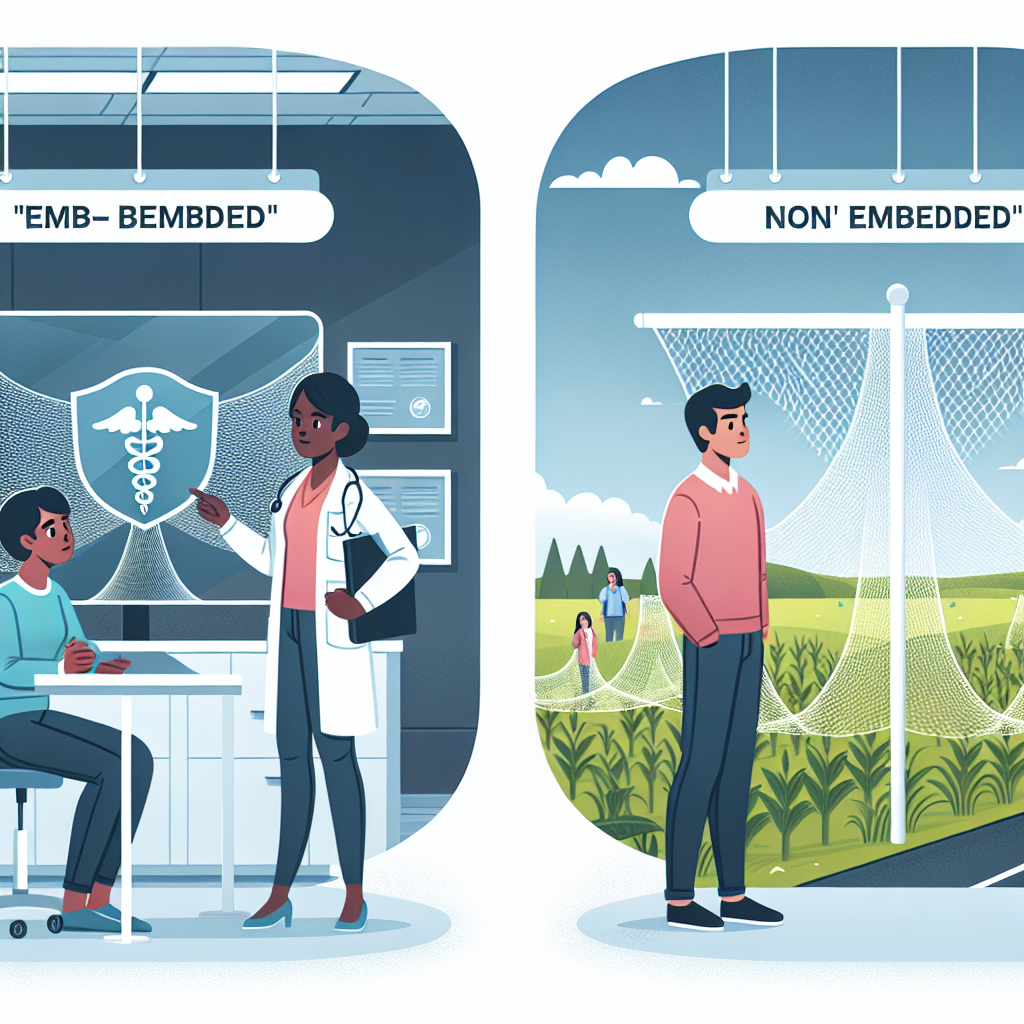Filed under Health Insurance on
Embedded vs Non Embedded Health Insurance: Key Differences

In the ever-evolving landscape of health insurance, understanding the intricate differences between various policy structures can be a daunting task. For those navigating the complex world of medical coverage, two terms, in particular, often cause confusion: embedded versus non-embedded health insurance. While both structures aim to provide comprehensive health coverage, they operate differently, influencing how benefits are delivered to policyholders. In this article, we will explore the key differences between embedded and non-embedded health insurance, supported by real-life examples and practical advice to ensure you make informed decisions when choosing a policy.
Understanding Embedded Health Insurance
Embedded health insurance refers to a policy structure where benefits and limits are applied at the individual level, typically in family plans. Each member of the plan has their own set of deductibles and out-of-pocket maximums, which are applied individually. As members utilize their health insurance, costs are tracked separately, potentially leading to varying costs depending on the healthcare usage by each family member.
Real-Life Example of Embedded Health Insurance
Consider a family of four covered by an embedded health insurance plan. Each family member has a deductible of $1,500 and an out-of-pocket maximum of $3,000. If the eldest child requires extensive medical care and quickly reaches their $1,500 deductible, the insurance will start covering the costs for that child beyond this point, subject to the co-payment arrangements. However, the other family members still need to meet their individual deductibles before the insurance begins paying for their healthcare costs.
This structure can be beneficial if one member of the family incurs significantly more healthcare expenses than the rest, as their needs will be covered without affecting the deductibles of other family members.
Exploring Non-Embedded Health Insurance
In contrast, non-embedded health insurance deploys a unified structure where the entire family shares a single deductible and out-of-pocket maximum. This means that the healthcare expenses of one family member contribute to meeting the common threshold, potentially triggering insurance coverage for the whole family sooner than in an embedded plan.
Real-Life Example of Non-Embedded Health Insurance
Using the same family of four as an example, let’s assume their non-embedded plan has a family deductible of $4,000 and an out-of-pocket maximum of $8,000. Here, all healthcare expenses from any family member contribute to this cumulative figure. If the eldest child has medical care costs surpassing $4,000, the family as a whole starts to benefit from insurance payments, as the collective deductible has been met.
This approach can be helpful when multiple family members expect to use their health coverage extensively, as costs incurred by one member benefit the entire family, potentially easing the financial burden sooner in the healthcare process.
Key Differences Between Embedded and Non-Embedded Health Insurance
Now that we have a basic understanding of how these insurance types work, let’s look at the primary differences:
- Structure of Deductibles: Embedded policies maintain individual deductibles for each family member, while non-embedded plans aggregate these into a single family deductible.
- Out-of-Pocket Maximums: With embedded plans, individuals also have personal out-of-pocket maximums. In non-embedded plans, there's a shared maximum for the entire family.
- Coverage Activation: Under embedded plans, insurance coverage kicks in for each member once their individual deductible is met. In non-embedded plans, it starts once the cumulative family deductible is satisfied.
- Financial Logistics: Embedded plans can be more financially predictable for families with significant healthcare needs for one member, while non-embedded plans benefit families expecting usage across multiple members.
- Policy Complexity: Embedded plans can sometimes lead to administrative complexities within a family plan, whereas non-embedded plans simplify the cost-sharing process across family members.
Choosing Between Embedded and Non-Embedded Health Insurance
The decision between embedded versus non-embedded health insurance hinges on a family’s specific healthcare needs and financial situation. There is no one-size-fits-all as each scenario presents its pros and cons:
Consider Family Health Dynamics
Understanding your family's health dynamics is crucial. If you foresee one member requiring more medical attention, an embedded policy may prevent that individual's expenses from affecting the family’s collective financial exposure. However, if healthcare costs are anticipated across the board, a non-embedded plan might result in lower overall expenses in the long term.
Evaluate Financial Capacity
Your family's ability to manage medical expenses also influences your decision. Families that can manage the higher upfront individual costs may opt for embedded plans, whereas those seeking to distribute costs and minimize early financial burdens may find non-embedded plans advantageous.
Consider Administrative Preferences
The simplicity of managing a single family deductible in non-embedded plans can appeal to those averse to handling multiple cost structures, a notable benefit for those seeking less administrative complexity in their policy management.
Conclusion
Both embedded and non-embedded health insurance policies offer their unique advantages tailored to different family healthcare needs. By thoroughly assessing your family’s medical patterns, financial capabilities, and administrative preferences, you can choose a plan that aligns more closely with your situation. Ultimately, understanding these key differences ensures informed decisions, maximizing your insurance benefits.
Frequently Asked Questions
1. What is the main difference between embedded and non-embedded health insurance?
The primary difference lies in how deductibles and out-of-pocket maximums are structured. Embedded insurance uses individual limits for each family member, while non-embedded insurance applies a single family-level threshold.
2. Which type of plan is better if one family member has high medical expenses?
Embedded health insurance might be more suitable in this scenario as it isolates the high medical expenses to the individual, potentially minimizing the impact on the rest of the family's coverage costs.
3. Can non-embedded insurance save money for a family expecting multiple medical needs?
Yes, non-embedded plans can lead to cost savings if multiple family members incur healthcare costs, as these plans allow all expenses to count towards meeting the collective deductible faster.
4. Are embedded plans more complex in terms of administration?
Yes, embedded plans can be administratively more complex as you need to keep track of individual deductibles and out-of-pocket maximums for each family member.
5. How does the choice between embedded and non-embedded insurance affect preventive care services?
Preventive care services are typically covered at 100% under both embedded and non-embedded plans, meaning these services should be unaffected by the choice between these two types of policies.





